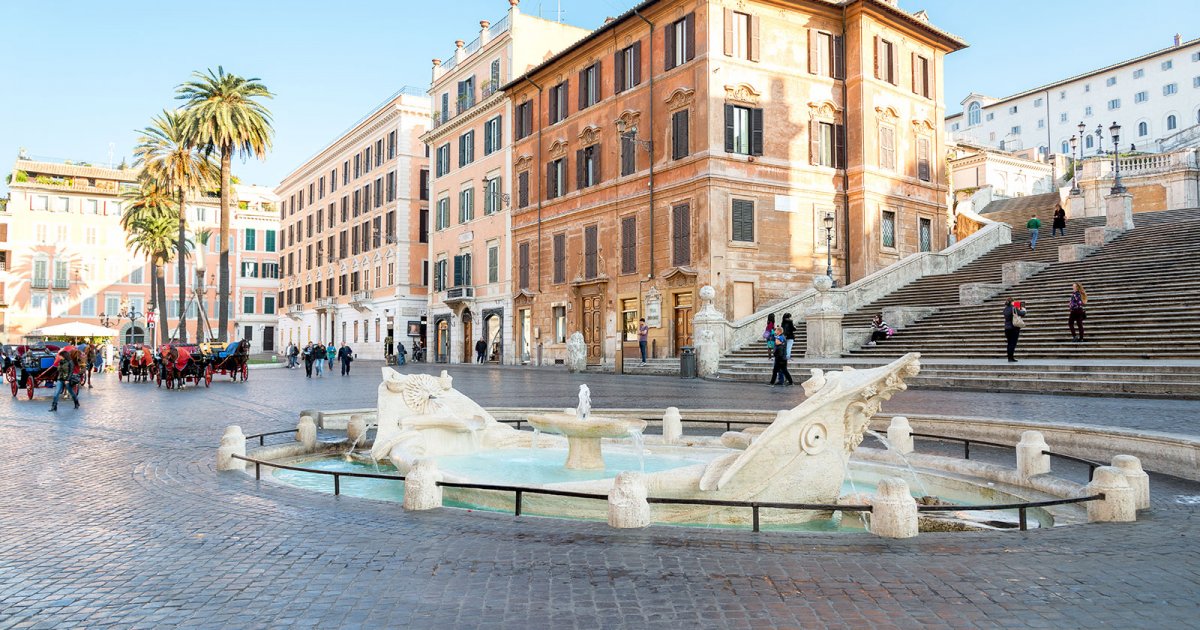PIAZZA DI SPAGNA, Square
 Language: English / USA
Language: English / USA
Right in the center of Piazza di Spagna, you can admire the famous Barcaccia, a beautiful fountain made in the first half of the seventeenth century by Pietro Bernini with the help of his famous son, Gian Lorenzo. The sculptor had seen an abandoned boat which gave him the idea to carve a half-sunken boat emerging from the fountain at ground level, shooting water from four cannons.
Now turn your gaze to the other beautiful monument in this harmonious square: it's the Column of the Immaculate Conception, built in the mid-1800s. You can recognize the bronze statue of the Madonna at the top, and four marble prophets at the base.
Of course, Piazza di Spagna is one of the main landmarks in Rome's historic center, with its beautiful 17th and 18th-century palaces that surround it in an almost theatrical backdrop, in perfect harmony with the fountain. Of all the palaces, I'd like to point out the College of Propaganda Fide, which incorporates the church of the Magi: both were designed by Francesco Borromini, although the façade facing Piazza di Spagna is by his "rival", Bernini. The Palace of Spain that gives the square its name, as I already mentioned, is home to the Embassy of Madrid at the Holy See. The buildings originally only had two stories, but have since been raised over the centuries without altering the appearance of the square.
Two palaces host small but precious museums that can be visited. One was the home of the great 20th-century painter Giorgio de Chirico, and in it you can admire many of his works. The other collects the memorabilia of two great British poets who died in Italy: Keats and Shelley.
If you'd like a British-style break, the historic Babington's tea room founded at the end of the 19th century by two English ladies offers an additional international touch to a square that is also the central point of the most elegant shopping area in the Eternal City.
FUN FACT: Via del Babbuino, one of the streets leading to Piazza di Spagna, is named after a Roman sculpture with such a mischievous character that it almost seemed like a monkey. Following ancient traditions, it is one of the so-called "speaking statues" of Rome, in the sense that anonymous phrases or words were written around the sculpture, often satirical ones.
And with this we have finished our tour of Piazza di Spagna in Rome. MyWoWo thanks you for staying with us, and will see you at the next Wonder of the World!



